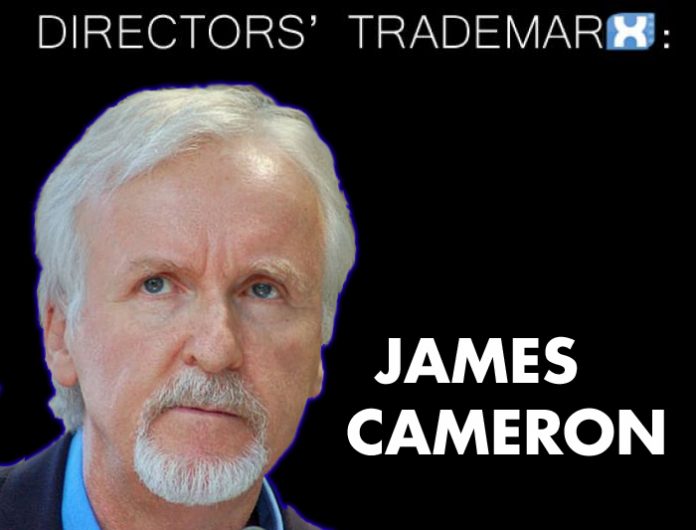Directors’ trademarks is a series of articles that examines the “signatures” that filmmakers leave behind in their work. For this iteration, we are examining the works of James Cameron as director.
Originally published June 5th, 2017
In college, James Cameron decided that he wanted to be a screenwriter. He switched from majoring in Physics to majoring in English, before eventually deciding to drop out and raise money to start his career. During that time, he worked many odd jobs, until he was finally inspired by Star Wars in 1977 to start his career in the film industry. In the early 1980’s he first worked as a miniature model builder at Roger Corman studios, demonstrating a talent for creating innovative special effects. Over time, he became a production designer, and special effects director. In 1981, he was a special effects director for the film Piranha II: The Spawning. Numerous production delays cost the original director his job, and Cameron was given the responsibility. Cameron would also later be fired as director, but remained on the crew of the film to see it through – eventually earning his first feature length directing credit.
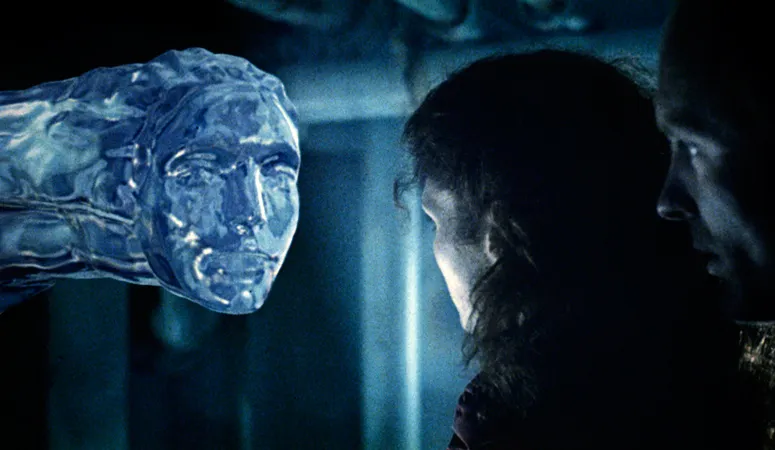
Cameron wrote the script to The Terminator, and was eventually able to get a small production company to agree to let him direct. That film, released in 1984, became a box-office hit, catapulting Cameron’s career. His next film was 1986’s Aliens, which was incredibly well-received by audiences and critics alike, becoming the second of many box-office blockbusters in Cameron’s career. Cameron continued to bush the boundaries of special effects technologies with his next film, 1989’s The Abyss. With its underwater sets and sophisticated computer-generated special effects, it was the most expensive film ever made up to that point (a threshold that Cameron would cross twice more in his career). Despite the high cost, the film became profitable at the box office, although it was not as much of a hit as his previous two films.
Cameon’s next film was a sequel, 1991’s Terminator 2: Judgement Day. T2 was a bonafide blockbuster and also received critical acclaim. Cameron immediately went to work on his next film, the action-comedy True Lies, which would release in 1994. True Lies became a hit in theaters and received mostly positive reviews. In 1997, Cameron released Titanic, which became one of the highest grossing films of all time. In addition to box office success, the film also found a lot of critical success. Titanic would be nominated for 14 Academy Awards, winning eleven of those awards (which tied a record). The winning awards included Best Picture and Best Director for James Cameron.
Following Titanic, it would be more than a decade before Cameron released another feature film. In the interim, he helped to produce a television show, developed technology for capturing 3D footage in real time, and spent time doing one of his favorite hobbies, underwater exploration. He released three documentaries on the subject, 2002’s Expedition: Bismarck, 2003’s Ghosts of the Abyss, and 2005’s Aliens of the Deep. His next film, and most recent release was 2009’s Avatar, which earned Cameron another Best Picture and Best Director nomination at the Oscars. The long awaited sequel, Avatar: The Way of Water hits theaters this week!
So the question posed is, if you are watching a James Cameron film and you don’t know it, what are the things to look for that would identify it as such? Here are five of Cameron’s trademarks as director, in no particular order:
VFX Pioneer (Raising the Bar)
![]()
While James Cameron doesn’t necessarily put special effects first in his films, his incredible ingenuity and attention to detail when it comes to VFX has to be considered his greatest legacy as a filmmaker. From the early years of his career working for B-movie king Roger Corman, Cameron learned how to create cost-effective special effects.
This can be seen most clearly in his early films, Terminator and Aliens. In Terminator, Cameron made extensive use of stop motion special effects, a skill he had picked up from Roger Corman. Make-up and sophisticated prosthetics blended with special effects shots would also play an important role in this film, as well as its sequel. In Aliens, Cameron made extensive use of miniatures and mirror shots to make the film look bigger than it actually was. He also used puppetry to do things that had never been seen in film before. Both the xenomorph queen and the power walker had crew inside to create motion during filming.
As his career advanced, and his films found a lot of success in theaters, cost was no longer a prohibitive factor to what Cameron could invision for the special effects he used in his films. Starting with 1989’s The Abyss, Cameron began developing and using sophisticated computer-generated visual effects (CGI). With the help of Industrial Light and Magic, Cameron oversaw the creation of the alien water tentacle sequence – the first use of computer generated effects to create moving/flowing water in film, and also an important milestone in motion capture as it mimics two of the actors in the sequence. This 75 second scene took more than 6 months to create. Cameron built on this technology with his next film (Terminator 2: Judgement Day), to create the morphing, metallic T1000. T2 set a new benchmark for CGI in film, and at the time was the film that was comprised of the most shots with CGI effects.
In Titanic, Cameron not only utilized sophisticated computer-generated special effects, but also build enormous sets in order to maximize the realism. He blended model work with computer generated people (which in turn were modeled after motion capture of actors) to create the massive scale of the titular ship in living motion. For a majority of the shots of the Titanic in its current oceanic grave, Cameron actually went underwater to capture the footage himself. For Avatar, Cameron’s use of computer generated special effects hit a new high. He utilized cutting edge 3D motion capture technology to depict characters that would be created entirely out of CGI. Cameron had used his time making documentaries to develop the technology himself that was required to pull this off.
Machines vs. Nature/Humanity
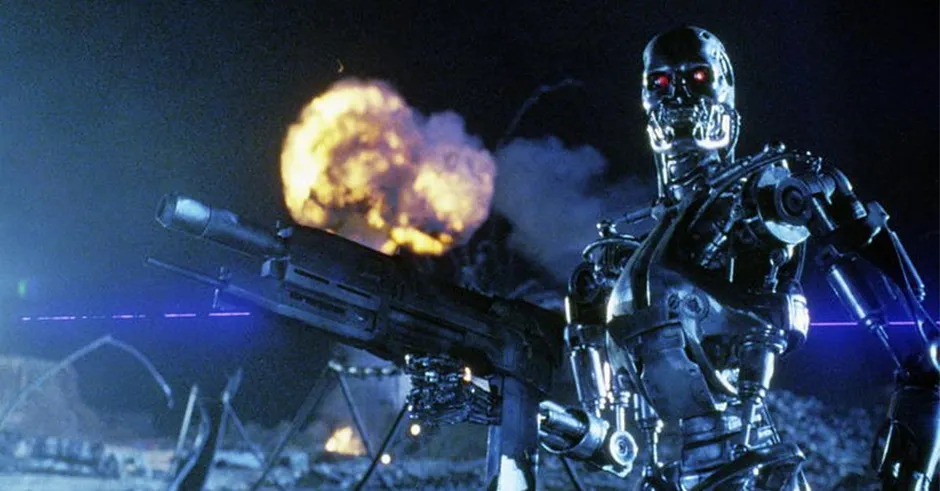
Besides True Lies, all of Cameron’s films focus on the relationship of man, machine, and nature in some way. Terminator and its sequel show the struggle of man vs. machine by literally facing its human characters off against a killer cyborg. It also explores mankind’s overreliance on technology which ultimately leads to our downfall (Judgement Day). Similarly, there’s a perturbation element because the machines begin using time travel to try and prevent their own demise, which changes the natural course of the universe even further. Aliens is also a more literal take man vs. nature, pitting combat marines versus the mighty xenomorph. In this film, mankind relies on their technology against the xenomorphs, but even then, it’s not quite enough.
The Abyss allows the audience to explore nature firsthand. By taking place at the bottom of the ocean, the characters are surrounded by nature, and the way they live and work is at its mercy. The danger of the ocean (and nature itself) is also explored in Titanic. In that film, Cameron explores the confidence in which mankind has regarding their technology. The titular ship was billed as “Unsinkable”, yet nature proved its power over mankind’s technology once again.
Avatar is Cameron’s most obvious effort to explore the conflict that can arise between technology and nature, taking an environmentalist tone. In this film, mankind is using their technology to mine a precious mineral on Pandora. While this activity is of benefit to humanity, it threatens the existence of the Na’vi and causes harm to the Pandora’s plants and animals. This conflict ultimately leads to a deadly skirmish between the two humanoid species.
Strong Female Leads
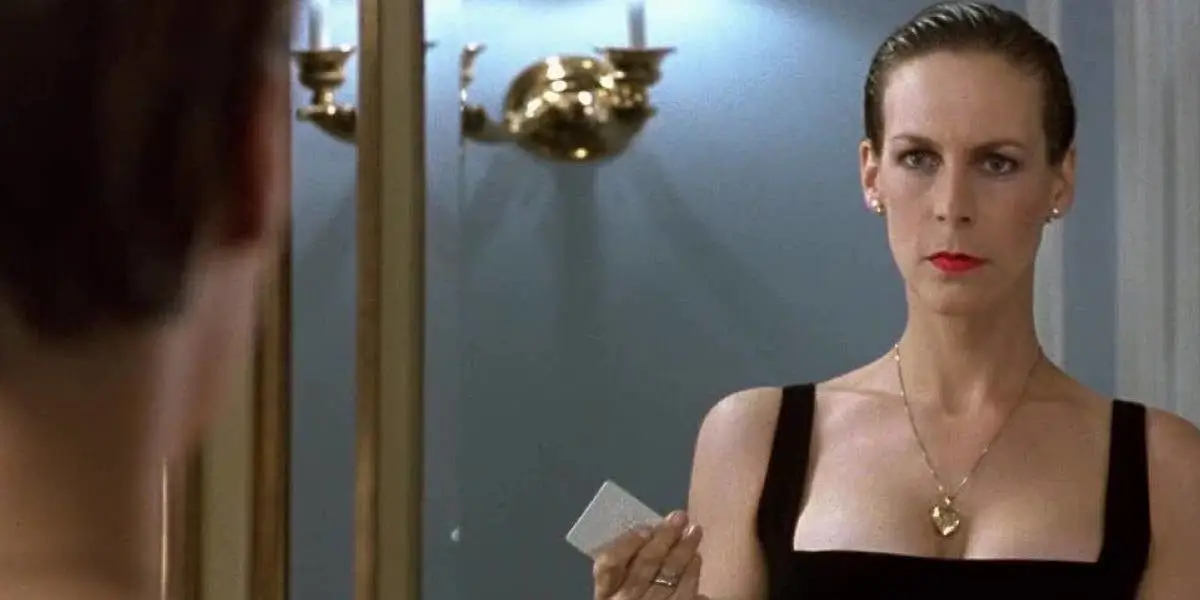
Cameron’s films feature two of the most well-known action heroines to even grace the big screen. Terminator introduced us to Sarah Connor, the mother of future revolutionary leader John Connor. Although Sarah was initially an innocent victim of Skynet’s attempt to rewrite the past, she would later embrace her situation and become an important part of the fight against the machines. In Terminator 2: Judgement Day especially, she uses the threat against her sons’ life to find the strength and courage to fight back. Motherhood is also an important concept in Aliens too, where Cameron took the already strong heroine of Ellen Ripley and gives her another source of motivation. In both these cases, Cameron also makes it easy for the audience to root for his heroine – they aren’t just a stereotypical action hero who happens to be female.
In his films where the female lead does not need to be an action heroine, they still exude strong qualities that are atypical for women in film. Although Titanic is a love story, Rose is not just the standard female romantic interest. In addition to persevering through difficult family issues at the beginning of the film, and the disaster of the sinking Titanic towards the end, her character is also the primary storyteller. The film is framed from her perspective looking back in time in a retrospective manner. If the film was simply about the sinking of the Titanic, it would not have been as effective. By giving the film Rose’s voice and playing off of the strength of her character, Cameron gives his audience something unexpected.
In True Lies, Cameron also shows us how a female character can defy expectations. In this film, Helen starts off as a bored suburban housewife. But when she becomes involved in her husband’s work as a secret agent, she experiences more adventure than she could have imagined. The film may be playing off of stereotypes for entertainment, but Cameron’s intent is to expand upon the ways that films typically use their female characters.
Monitoring the Situation

A physical trademark that you will find in nearly all of Cameron’s films is a shot in which the camera transitions from a character watching an event unfold on a screen to the actual event live in real time. One of Cameron’s most famous screen transitions occurs at the beginning of Titanic when the elderly Rose is watching the underwater footage of the remains of the Titanic. As she begins her story, the camera focuses on one of the monitors behind her which shows the bow of the ship. As she continues to talk, the camera zooms in on the footage of the ship and it slowly transforms back to its original condition. This shot not only establishes Rose as an important link between the past and the present, but seamlessly transports the audience back in time to begin the main plot.
In Terminator 2: Judgement Day, there is a shot during Sarah’s escape from the mental hospital where a security guard looks over at a monitor and sees Sarah walking down a hallway with a hostage. A few seconds later, Cameron shows us this hallway in real time. By showing the guard’s reactions to Sarah’s actions, rather than only Sarah’s perspective, Cameron is offering a more realistic perspective on the situation.
In Avatar, there is a similar moment. When Jake, Grace, Norm, and Trudy are escaping from the holding cell, there is a shot of Colonel Quaritch observing from a terminal in the main control room. He watches them commandeer a helicopter for their escape, and then the camera changes perspective to inside the helicopter in that moment, showing the same event. In this way, Cameron is acknowledging that the antagonist is pursuing his protagonists. Cameron gives his audience the expectation of confrontation, which helps to build up suspense and creates a logical progression, rather than having the antagonist randomly appear later.
Go! Go! Go!
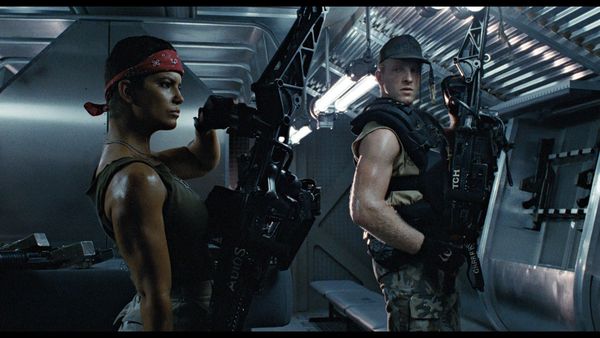
Since Cameron’s films are action-oriented, it is common for characters to shout commands at eachother. The most consistent line is one character yelling at another to move quickly. An example in Terminator is when Detective Vukovich is yelling at other officers in pursiuit of the Terminator; “Go! Go! He’s got her!”. In Aliens, Private Hudson is frequently yelling “Let’s go!”, and in Terminator 2, both John and the Terminator yell “Go! Let’s go!” at eachother. In Titanic, after the ship has hit the iceberg and the lower compartments are being flooded, there is a scene of one of the boiler stokers yelling “Go lads! Go! Go!” as the doors are closing to seal off the area. Finally, in Avatar, when Trudy is trying to steal the helicopter, Jake yells “Go! Go! Go!” once he is onboard.
In a recent reddit AMA session, Cameron noted that he does not do this on purpose when writing his films. More likely, he admitted, it comes from the way he talks. Those who have been on set with Cameron would agree. Cameron is known as been a very detail-oriented and demanding director. He is not afraid to yell at his cast and crew to get what he wants – he has said that he doesn’t have time to make new friends when he is working. At least partially, I think this comes from his experiences working in special effects. For that type of work, he had to make due with what he had and made sure not to waste any money. Now as director, he brings the same mentality to his films, they’re just much more complicated and expensive. The “Go! Go! Go!” type of line in his films is thus a good representation of the energy and focus that Cameron brings to his productions.
Want more Directors’ Trademarks?

